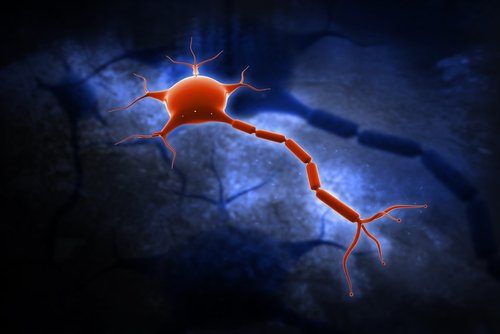Skin Nerve Fiber Density Can Be Effective Outcome Measure in CMT1A Trials, Study Says
Written by |

The density of nerve fibers found within the epidermis — the outermost layer of the skin — can be used to evaluate outcomes in clinical trials involving patients with Charcot-Marie-Tooth type 1A (CMT1A), a new study shows.
The study, “Intraepidermal nerve fiber density as biomarker in Charcot-Marie-Tooth disease 1A,” was published in the journal Brain Communications.
Patients with CMT1A often lack sensation in their hands and feet due to nerve damage, and experience muscle weakness and foot deformities. Clinical trial outcomes for CMT1A are assessed based on improvements in clinical features, but usually do not evaluate changes in actual nerve damage.
Therefore, researchers at the University of Würzburg, in Germany, and their colleagues set out to explore possible outcome measures based on nerve damage that could be used in future clinical trials with CMT1A patients.
To that end, they collected skin samples from 48 patients with CMT1A, seven with chronic inflammatory demyelinating polyneuropathy (CIDP), 16 with small fiber neuropathy (SFN), and 45 healthy individuals (controls). CIDP and SFN are classic neuropathic (nerve damage) diseases similar to CMT1A that were used as a reference for comparison.
To assess the extent of skin denervation (loss of nerve supply to the skin), the investigators analyzed frozen sections of glabrous skin — skin devoid of hairs — taken from the index finger of each participant. Disease severity among those with CMT1A was assessed using the Charcot-Marie-Tooth Neuropathy version 2 Score.
Results showed that intraepidermal nerve fiber density — the number of nerve endings per unit area of the epidermis — was reduced in CMT1A patients compared with healthy individuals, and was negatively correlated with disease severity.
Additionally, they found that the density of Meissner corpuscles — nerve endings that are responsible for sensitivity to light touch — was negatively correlated with age in CMT1A patients, but not in controls.
They also found the density of Merkel cells, which are found on the skin and are sensitive to light touch, was reduced in CMT1A patients compared to healthy individuals. Furthermore, in CMT1A patients, the proportion of denervated Merkel cells, which are no longer sensitive, was highly increased and correlated with age.
In addition, unlike healthy individuals, those with CMT1A had a series of abnormalities in their nodes of Ranvier — periodic gaps in the myelin sheath that protects nerve fibers and facilitates the transmission of nerve impulses.
Finally, the researchers found that the density of Langerhans cells, which are part of the skin’s immune system, was increased in CIDP patients, but not in CMT1A patients, compared with the controls.
“Our data suggest that intraepidermal nerve fiber density might be used as an outcome measure in Charcot-Marie-Tooth 1A disease, as it correlates with disease severity,” the researchers wrote.
“The densities of Meissner corpuscles and Merkel cells might be an additional tool for the evaluation of the disease progression. Analysis of follow-up biopsies will clarify the effects of Charcot-Marie-Tooth 1A disease progression on cutaneous [skin] innervation,” they added.




